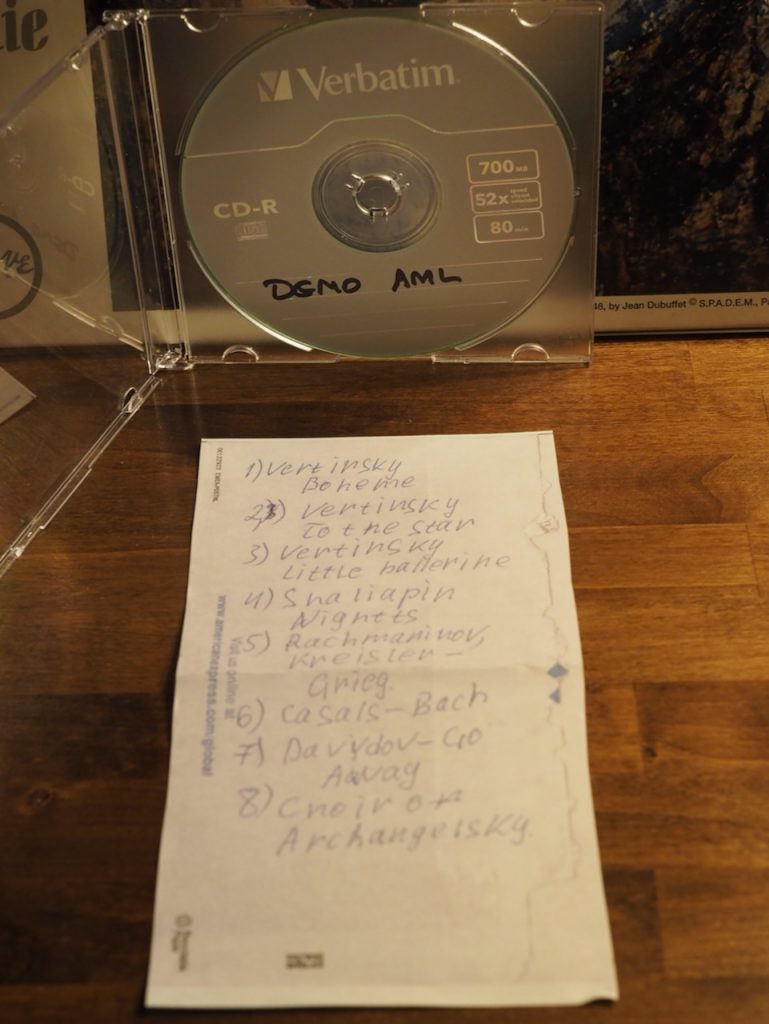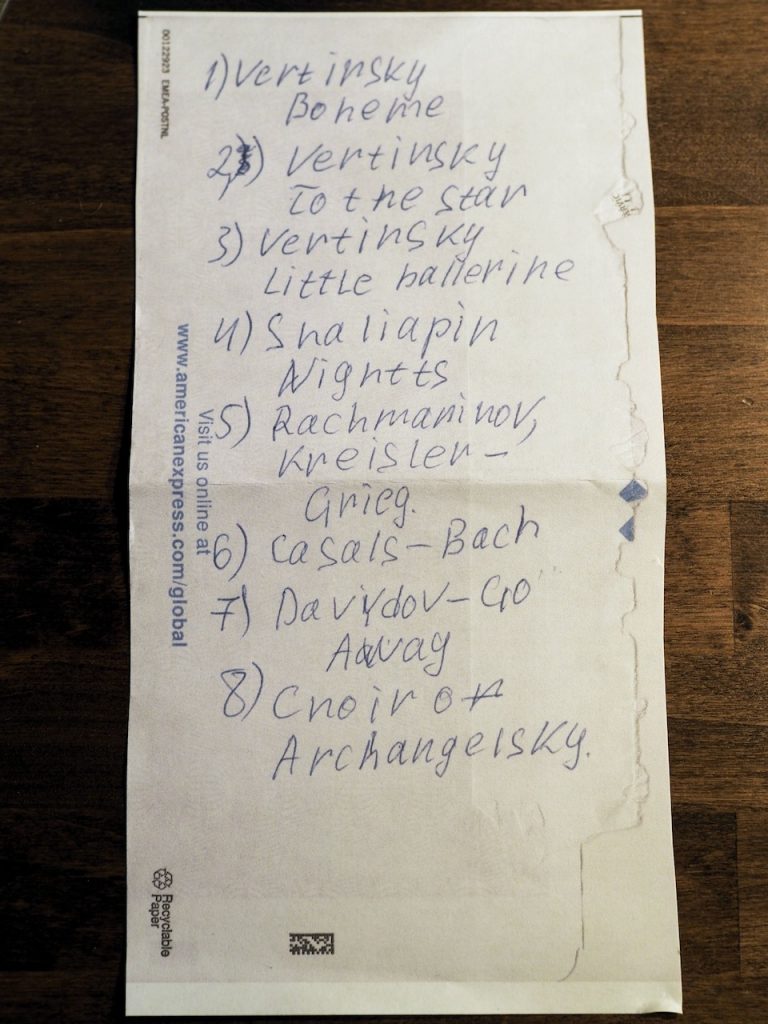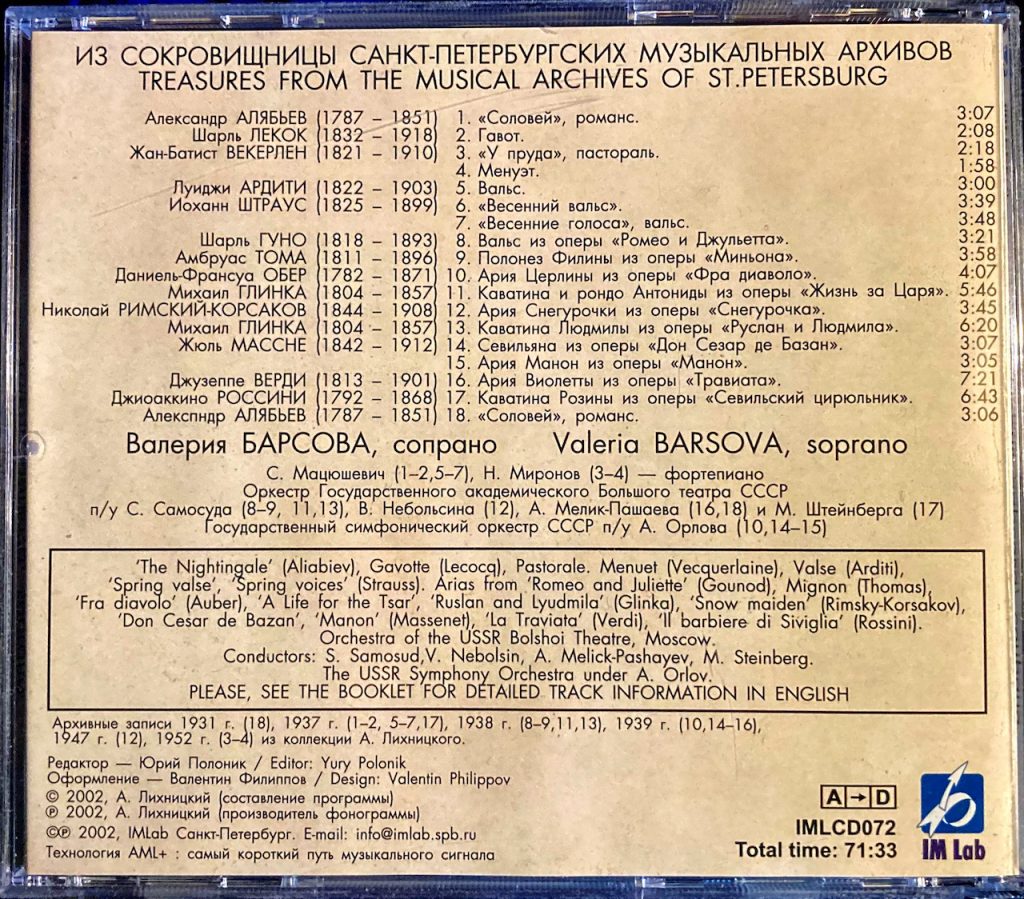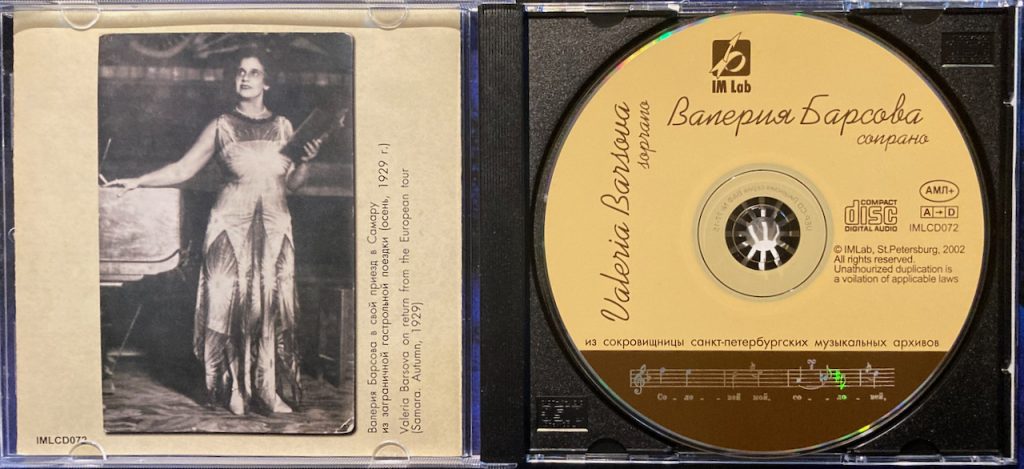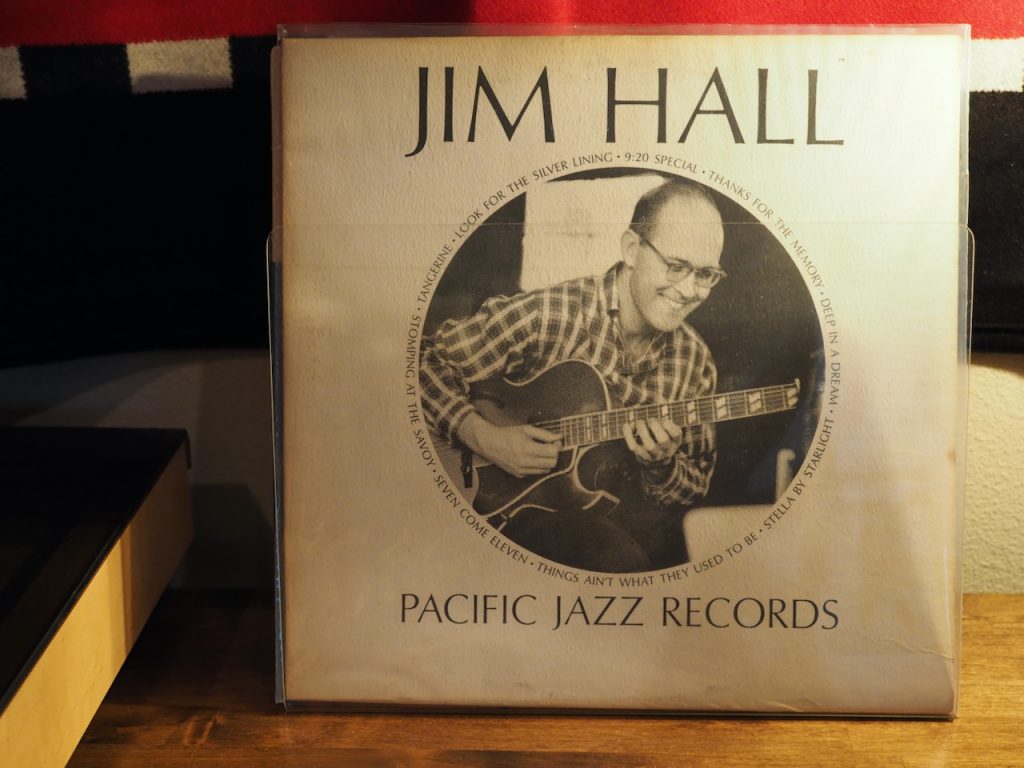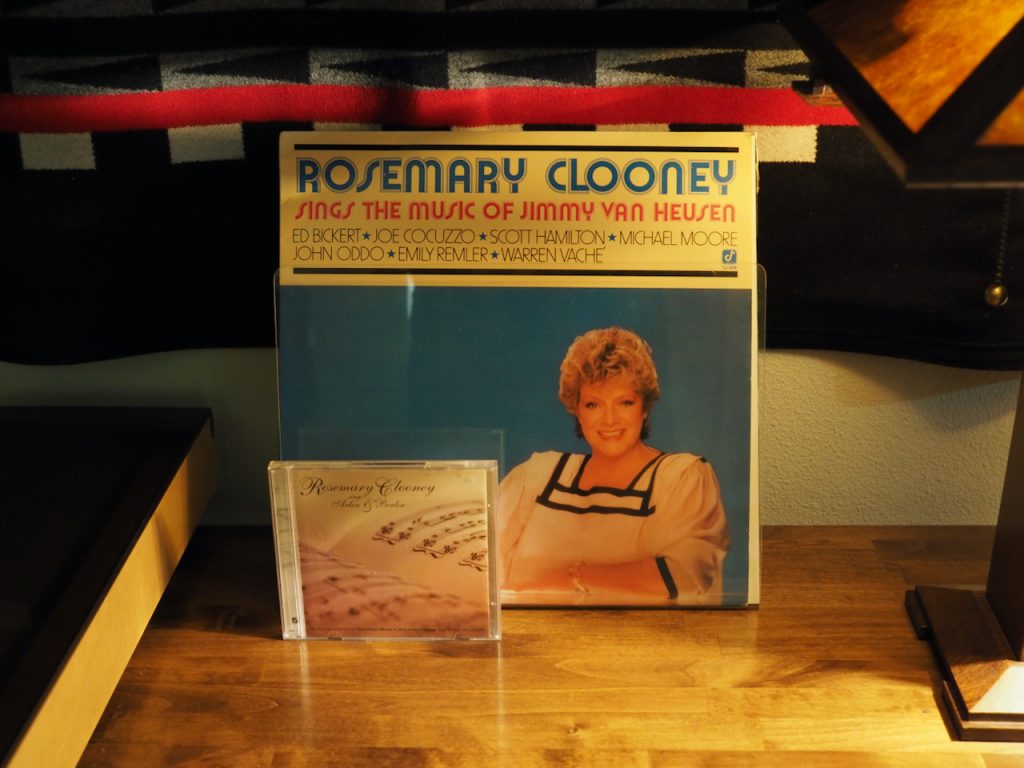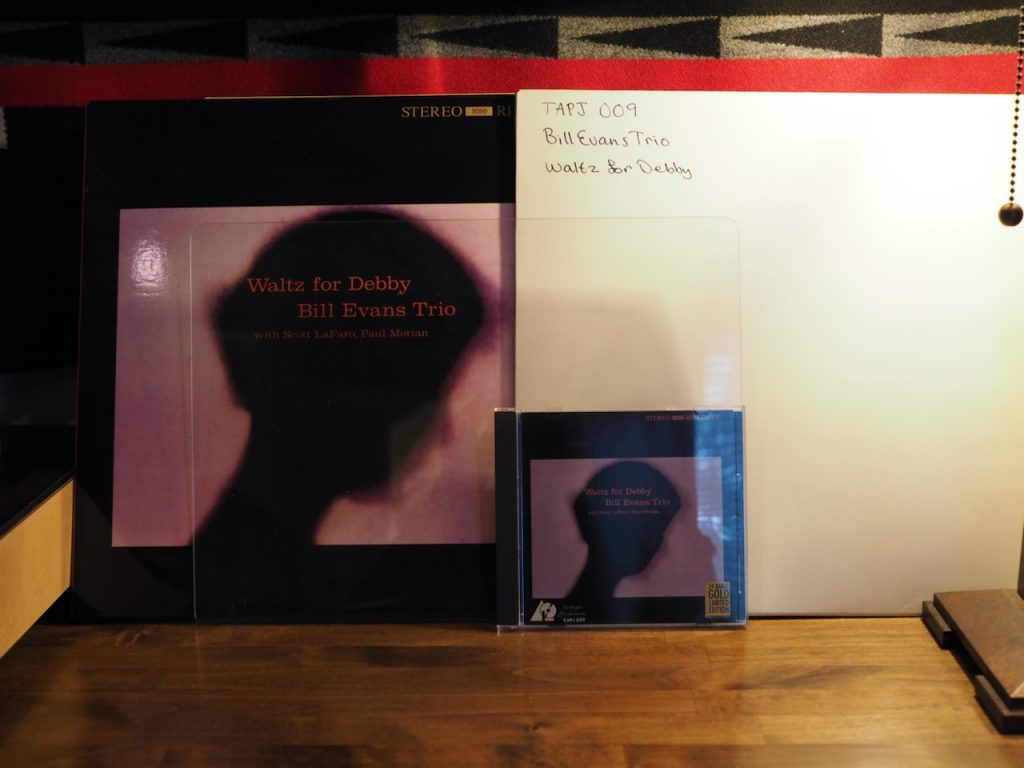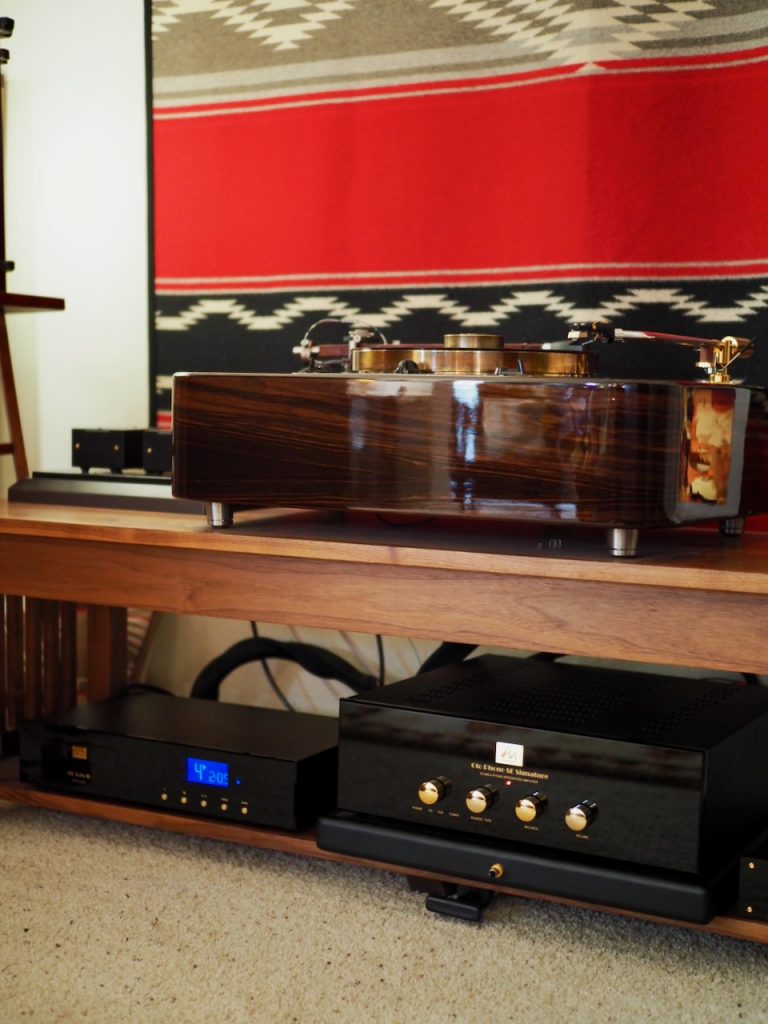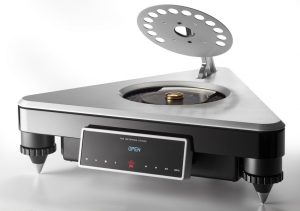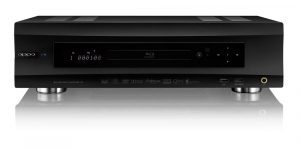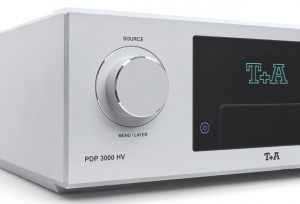Listening Impressions
Now let me tell you about a few of the examples of the music I have been listening to, and what I heard while listening to Red Book CDs with the Audio Note (UK) CD 2.1x/II.
First let's play some 78 records from early in the history of recorded music, or rather, transfers by Peter's late friend, Anatoly Markovich Likhnitsky, from 78s in his personal collection, to CD.
Anatoly is credited with being one of the early pioneers in developing the high-fidelity music culture in the USSR. Anatoly originally worked designing medical equipment, then later worked designing audio equipment, like the early "Brig" amplifier, for example, one of the first hifi amplifiers in the USSR. Anatoly went on to become a renowned recording engineer, who was in part known for his passion for 78rpm records, and who went on to develop a specialty analog-to-digital converter to transfer those 78s to digital, and onto CDs.
In the playlist above you can see a few of Peter's favorite selections of Anatoly's 78rpm transfers to CD using his specialty DA converter, which includes selections from Vertinsky, Shaliapin, Davidof, and others.
So, what did I hear from this CD using the CD 2.1x/II? Or maybe, it would be better to ask, "What did I experience?"
First of all, the musical performances on these 78 transfers are extraordinary, with engaging and beautiful performances by the artists. The vocals on the Vertinsky selections, for example, are hauntingly beautiful, and quite literally gave me chills while listening.
It is difficult to adequately describe the presence and impact of the music on these 78s, as there is something very direct and authentic about the performances that you don't really hear in a lot of modern recordings. It's almost like when the music starts, I time-traveled back to the performance.
There is some surface noise and recording anomalies from the 78s, but unlike with some audiophile-style components which presents noise or recording anomalies as an audio ice pick to the forehead, the CD 2.1x/II renders the noise inoffensive, and within a few seconds I didn't even notice it, just the music that was coming through to enjoy.
Listening to these 78 transfers was more about deeply experiencing the "soul" of the music, for lack of a better way of saying it. I was experiencing the music more on an emotional level, appreciating the artistic aspects of the music, the techniques of the musicians, while beautiful music filled my living room.
Hearing these 78 transfers has been a musically, emotionally, and mind-expanding experience for me.
The bottom line is that these 78 transfers to CD played back through the CD 2.1xII player, the Oto Phono SE Signature integrated amplifier, and my Altec loudspeakers, made me wonder exactly when it was that audio took a wrong turn and lost the ability to convey such remarkable music with the intensity and passion it is capable of.
I feel a little bad telling you about how wonderful these 78 transfers are, as this music isn't available commercially, so you can't hear them. I wish you could hear them like I heard them, as I think it would refine your perceptions about what is truly important in audio, just as it has for me.
Thankfully, a lot of important music from the earliest recording eras have been archived by the nations where the recordings were made, or by individual collectors.
This album from the IM Lab record label is an example of a commercial Red Book CD from the former USSR, and is titled Treasures from the Musical Archives of St. Petersburg, featuring Valeria Barsova, soprano; from the Orchestra of the USSR Bolshoi Theatre, Samuil Samosud, Vassily Nebolsin, Alexander Melick-Pashayev, and Maximilian Steinberg conductors; and The USSR Symphony Orchestra, A. Orlov, conductor.
There are eighteen tracks of archive recordings from 1931, 1937, 1938, 1939, 1947, and 1952, from the personal 78rpm record collection of Anatoly Markovich Likhnitsky, using his specialty 78rpm record analog-to-digital converter to make transfers for CD (signified by the AML+ emblem on the CD's documentation).
The liner notes state: "Historical recordings restored using the AML+ technology bring the listener musical performances just as they were recorded on vinyl many years ago. The recordings included on this CD have undergone no computer processes (including refinement and enhancement) in order to achieve this."
This CD was given to me by Peter Qvortrup (Audio Note (UK)) while visiting him in Brighton, England, as an example of an important musical performance from the 78 era that is indispensable to have in one's music library.
This Red Book CD is a perfect example of why it is so important to be able to listen to historic performances from the earliest eras of the recording arts on your hifi, and the importance of having audio equipment that can present it with the musical grandeur it deserves.
I would say that what I'm hearing from these 78 transfers to CD is a validation of Peter's "comparison by contrast" method for developing audio equipment, it's a boon for music lovers given what I'm hearing from the Oto integrated amplifier and the CD 2.1x/II.
All of the normal audiophile considerations about musicality and visuospatial recording effects don't really apply here, as these musical documents of rather incredible musical performances are transcendent of any audiophile considerations.
These performances are so amazing that I listened to this CD all the way through three times when I first played it, just to experience the sheer sensual experience this music offers, which is just in another league from many contemporary recordings.
I don't know for sure—I'm just guessing—but I think part of what makes these recordings so amazing has to do with the speed they were recorded at (78rpm), as well as the simple and short recording chain used to produce the original 78s, and of course the AML+ analog-to-digital remastering process is impressive.
Most of you have probably heard the premium Analogue Productions 45rpm versions of record albums, and noted that they are far superior to the 33rpm versions of the same album.
A 45rpm album has more data laid down in its groove, thanks to its ~ 1.4 times faster speed compared to the 33rpm version, and it is easy to hear the difference in the music's quality.
A 78rpm album has more data laid down in its groove during the recording process by a factor of ~2.4 compared to a 33rpm record, and that aspect of these 78rpm record transfers comes through loud and clear in listening, and the nice thing about being able to listen to these performances on a CD is one doesn't have to own a dedicated 78rpm record system to hear what these 78s are capable of.
It is a little challenging to describe the full experience of listening to these 78 transfers to CD, but they really transcend what I normally think of when listening to music on my hifi.
These 78s are by analogy kind of like comparing a really good single ended triode (SET) amplifier to an early solid-state amplifier in how they relate to many modern recordings, performance-wise.
These recordings and performances are lit from within with life, vitality, presence, and are an almost overwhelming sensual experience to hear, and the emotional impact that results from listening to them is off the charts. I'm hooked!
Listening to this CD on the CD 2.1x/II was revelatory.
The CD 2.1x/II made this music incredibly fun to listen to, and full of vitality and life.
The recording is dynamic, possesses natural sound, and provides a vivid presence and a sense of spaciousness that filled up my listening room (above).
Forget what you think you know about mono—or the acoustic and electric recording eras—these early recordings transcend any thoughts about the differences between mono and stereo, or any audiophile considerations, as they are just amazing works of art to hear by any measure.
Soprano Valeria Barsova is stunning, and she is able to do remarkable vocal acrobatics that just left me pondering how amazing people can be.
There is surface noise from the 78s on these recordings, but I didn't find it distracting, as it is rendered as a soothing white noise that exists in a different plane from the music, one that doesn't affect or detract from the music. I noticed the noise for the first few seconds of the music, then any thought about it disappeared while listening to the musical performances, as it just faded into the background unnoticed.
The subtle noise actually adds yet another element of exotic charm to experiencing a rare musical document of a remarkable performance from a different age, before the world got so complicated like it is today.
I think the important thing to keep in mind is that there are thousands of important 78 record musical performances archived around the world that are just waiting to amaze you, if they were only transferred to CD with a superior method like the AML+ technology, and made available commercially so you could have an easy way to access them.
Until that happens—if it ever does—you can scour Discogs looking for 78 transfers to CD like I do, in hopes of finding another AML+ treasure!
Forget everything you think you know about audio, give some good 78 transfers a listen, and be prepared to have your audio priorities adjusted so that you will want embrace a whole new world of music that you might not have even known existed, a new-old world of treasures from antiquity, that exist in our recorded music canon, that are waiting to amaze you as you feel the music instead of just listening to the sound in hifi fashion.
It is quite the illuminating experience!
Let's do a CD to LP comparison to see how the CD 2.1x/II compares to my CTC Garrard 301 turntable, played via the Pete Riggle Audio Engineering Woody tonearm, mounted with my Ortofon SPU Classic G MkII moving coil cartridge with an 18 µm spherical stylus profile. The tonearm leads go directly into an Audio Note (UK) AN-S4 step-up transformer (review to come), and the AN-S4 is connected via shielded Duelund DCA16GA tinned-copper interconnects to the Oto's phono stage.
First off, the Jim Hall LP is the second release of the mono version rather than the first, and the CD liner notes say this about the second release, "However, the second LP edition had only nine tunes ("This is Always" was omitted) and presented edited versions of many tracks (mainly editing out piano or bass solos)."
The master tapes for this session have been long lost, sadly, so the CD was remastered from a first edition LP (sort of like what was done with the AML+ 78 transfers).
The CD also includes four additional tracks featuring Jim Hall and pianist and composer John Lewis from 1957, during the same period the first edition LP was recorded.
The CD played through the CD 2.1x/II crushes the second edition LP played through my CTC Garrard 301 turntable.
There's just no comparison, the CD version is full of life, nuance, and natural sound quality, that brought Jim Hall's music to life in my living room. By comparison, the second edition LP sounded somewhat muted, lacked resolution, with tempos and melodies sounding somewhat off by being slower and less dynamic, compared to the CD.
To be fair, this would be a better comparison if I had a copy of the first-generation Jim Hall LP, but still, there was no comparison between the two, the CD was clearly better both musically and sonically.
So, the first round of LP to CD comparisons was firmly in the CD 2.1x/II's favor, with the LP coming up a rather distant second place.
Next up for an LP to CD listening comparison was a Rosemary Clooney LP and CD (Rosemary Clooney is the auntie of actor George Clooney, for an interesting bit of family history).
The LP is Rosemary Clooney Sings The Music Of Jimmy Van Heusen (Concord CJ-38, 1986), and features Rosemary Clooney (vocals), Ed Bickert (guitar), Joe Cocuzzo (drums), Scott Hamilton (tenor sax), Michael Moore (bass) John Oddo (piano), Emily Remler (guitar), and Warren Vache (cornet).
I'm a huge Ed Bickert fan, and I even built a near-replica of the modified Telecaster Ed used for playing jazz for use in my own jazz guitar studies, so I really enjoyed hearing Ed play on this LP.
Rosemary Clooney was a remarkable jazz singer, and one that has not received adequate coverage with quality remasters of her albums. I was delighted by Rosemary's impressive vocals, and gained newfound respect for her as a jazz singer – she's great!
In fact, everyone on this album is an exceptional musician, and I was delighted to see that the late jazz guitarist, Emily Remler, also plays on this album, a very special treat indeed!
The CD is Rosemary Clooney Sings Arlen & Berlin (Concord CCD2-2134-2), and actually is a two CD set. The CD includes Rosemary Clooney Sings The Music Of Harold Arlen (Concord, 1983), featuring Rosemary Clooney (vocals), Scott Hamilton (tenor saxophone), Warren Vaché Jr. (trumpet, cornet, flugelhorn), Dave McKenna (piano), Ed Bickert (guitar), Steve Wallace (bass), and Jake Hanna (drums).
The second CD is Rosemary Clooney Sings The Music Of Irving Berlin (Concord, 1984), featuring Rosemary Clooney (vocals), Warren Vaché Jr. (cornet, flugelhorn), Scott Hamilton (tenor saxophone), John Oddo (piano), Ed Bickert (guitar on tracks 1,2,5-10), Chris Flory (rhythm guitar on tracks 3,7), Phil Flanigan (bass), and Gus Johnson (drums).
Not only are these CDs an Ed Bickert treat, but also another jazz guitar great, Chris Flory, appears on select tracks of the second CD.
There's this "breath of life" thing going on when I am playing Rosemary Clooney's LP Rosemary Clooney Sings The Music Of Jimmy Van Heusen, in that the music just breathes with a live-like presence and intensity. The performance feels so alive, so utterly natural, it is a real treat!
Compared to the CD Rosemary Clooney Sings Arlen & Berlin, the CD actually sounds a little warmer and richer, just the opposite of what you might expect from a digital to analog comparison.
However, in this case there's more there with the analog, more natural dynamic gradations, the instruments and Rosemary's voice sound more natural, not a lot more, but more. The LP fills my entire room with the sense of the recording, the CDs a little less so.
However, this is not an exact comparison using the same albums (that's coming), but is comparing albums of largely the same musicians by the same label, not too many years apart.
So, this time I preferred listening to the LP over the CDs, but the CD 2.1x/II was also superb, both musically and sonically, and I enjoyed my time listening to both LP and CDs.
Next let us listen to the same album on CD and LPs, all of which were offered by the superb Analogue Productions record label of Chad Kassem, featuring the much beloved album by both music lovers and audiophiles, Waltz for Debby, by the Bill Evans Trio.
The CD I have of Waltz for Debby (Analogue Productions CAPJ 009) is one of the "24 Karat Gold Limited Edition" that was mastered by Doug Sax at the Mastering Lab with vacuum tube electronics using the original master tapes.
The 33 1/3 rpm (hereinafter "33rpm" for ease in writing) LP I have is Waltz for Debby (Analogue Productions, test pressing TAPJ 009, 1992), and the 45rpm LP set is Waltz for Debby (Analogue Productions, which was part of the Analogue Productions Bill Evans Riverside box set).
I believe all of these were all mastered by Doug Sax at the Mastering Lab with vacuum tube electronics using the original master tapes from 1961, but of course the 33rpm test pressing has no info on its plain white album cover, and neither does the 45rpm LP set (which just reproduces the original album art and notes).
The CD Analogue Productions CD of Waltz for Debby sounds superb on the CD 2.1x/II. This live CD sounds natural, musically believable in terms of tone, timbre, tempos, melody, dynamics, and rhythm, for example, with the images presented vividly across a wide soundstage, and there is nice sense of the recorded acoustic present.
All in all, the CD 2.1x/II presents the Analogue Productions CD of Waltz for Debby as a thoroughly enjoyable musical performance that was a lot of fun to listen to.
The 33rpm LP Analogue Productions test pressing of Waltz for Debby (Analogue Productions, test pressing TAPJ 009, 1992), is impressive, and it sounds more musically natural than the CD, particularly noticeable in the way the brushwork on the drum cymbals sounds, which on the CD were a little courser and more abrasive sounding in comparison.
To be fair, the CD sounds really good and was completely enjoyable to listen to through the CD 2.1x/II, but the Analogue Productions test pressing of Waltz for Debby through my CTC Garrard 301 is on another level both musically and sonically compared to the CD.
The 45rpm Analogue Productions LP set of Waltz for Debby was about as much better musically and sonically than the 33rpm test record, as the 33rpm LP is than the CD.
The 45rpm LP sounds even more musically natural than the 33rpm LP test record, and serves up more recorded nuance in an eminently natural fashion. There is also a more vivid sense of presence to the images on the 45rpm LP, and the recording overall sounds more transparent, with an enhanced sense of the acoustic space.
Given these comparisons were all with the same recording, with the same mastering, from the same label, they all sounded quite a bit different. One thing was apparent though was that whether it was the LPs being played on my CTC Garrard 301, or the CD being played on the CD 2.1x/II, they were all very enjoyable to listen to, and I didn't feel any meaningful lack of engagement or loss while listening to the different versions.
However, the differences I heard between the CD, the 33rpm test record, and the 45rpm LP set were clearly in different classes as far as sound quality goes, although probably not by as much as you might guess, and the good news was that in all cases, the ability to engage with the music and enjoy it for its own sake was roughly equivalent between my CTC Garrard 301 and the CD 2.1x/II.
Summary and Conclusions
I've listened to an immense number of CDs since the arrival of the CD 2.1x/II, and it has allowed me to enjoy Red Book CDs much as I would a good LP, and sometimes even more so. That's a first for me with CDs.
Another first for me was listening to the AML+ 78 transfers to CD, which were as illuminating as they were astonishing, as I transitioned into "feeling" the music instead of just hearing the sound, and it's been quite an ear-opening, heart-opening, and mind-opening experience that I hope you'll also get to experience one of these days.
While I won't be giving up my LPs and turntables any time soon, as I still love them, it has been a true pleasure to experience what the CD 2.1x/II can do in turning Red Book CDs into a truly enjoyable music listening experience with every CD I played.
While I could still easily hear the differences in recording quality of the various CDs I listened to over the review period with the CD 2.1x/II, the CD 2.1x/II managed to make all of the CDs come across as an "authentic" musical experience—as Peter would say —that I found truly enjoyable and satisfying to listen to.
I've come to realize in listening with the CD 2.1x/II, that the Red Book CD format is much better than I would have imagined it could be based on listening to Red Book CDs on CD players that I have owned in the past.
Perhaps the most important realization for me during my time with the CD 2.1x/II, is that it opens up a vast library of music to listen to that I wouldn't otherwise have been able to hear and enjoy, and for that reason I find it to be an indispensable addition to an audio system.
As such, this unassuming CD 2.1x/II injected a dose of fun, adventure, and immense listening satisfaction into my life in a way that was completely unexpected from this old analog stalwart.
After dusting off my large collection of Red Book CDs and doing some listening, I realized that this brilliant CD player had an uncanny way of turning ones and zeroes into a liquid analog-like naturalness, and delivering the soul of the music directly to my heart from every CD I listened to.
The CD 2.1x/II got me so excited about the music lurking within Red Book CDs, that I even went out and bought a bunch of new CDs so I could hear them transformed into music through this endearing CD player.
Having a CD player that can reliably turn Red Book CDs into such an enjoyable listening experience makes the CD 2.1x/II an easy recommendation and a must audition to music lovers and audiophiles everywhere. The price is $3874 USD.
Audio Note (UK) Contact Information
Website: https://www.audionote.co.uk/
Email: [email protected]
As always, thanks for taking time to stop by Positive Feedback, and to read this article about the Audio Note (UK) CD 2.1x/II Red Book CD player.
May the tone be with you!




